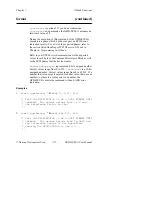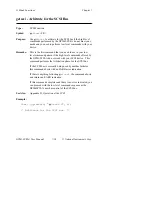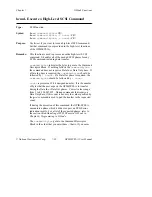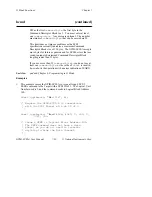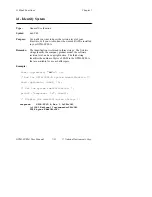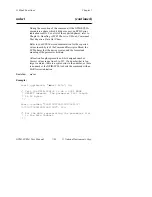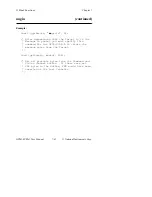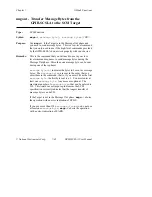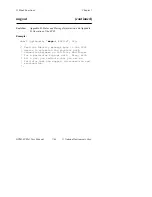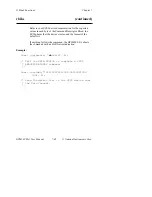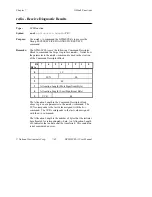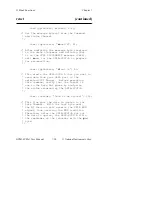
Chapter 7
G Mode Functions
© National Instruments Corp.
7-41
GPIB-SCSI-A User Manual
msgin - Transfer Message Bytes from the Target
to the GPIB-SCSI-A
Type:
SCSI Function
Syntax:
msgin
<CR>
Purpose:
Use
msgin
if the Target is in the Message In phase and you
want to receive these message bytes. This is a low-level
command that you only need to use if the high-level
commands provided by the GPIB-SCSI-A do not work
properly with your device.
Remarks:
You must use the
msgin
command in your low-level
command sequence to receive message bytes during the
Message In phase. More than one message byte can be sent
during one of these phases. The
msgin
command
automatically gets all the message bytes from the SCSI device.
This command places all the message bytes received into the
Command and Status Channel buffer. There is no marker
placed after these information bytes to indicate which of the
bytes are valid message bytes or which ones are GPIB-SCSI-A
status bytes. The reason for this is that most all byte values
can be used for message bytes and no arbitrary value can be
chosen as a marker. Therefore, the one sure method of
analyzing this data, if necessary, is to know that most
messages are one byte long (unless the first message byte
indicates extended messages, in which case there is a
prescribed method for knowing the total length of the
message). With this in mind, you can treat the first byte in the
buffer of the Command and Status Channel as the only
message byte, or the beginning of an extended message.
If there is anything following
msgin
, the command aborts the
operation with an EARG indication.
See Also:
Appendix B, Status and Message Information, and Appendix
D, Operation of the SCSI.

